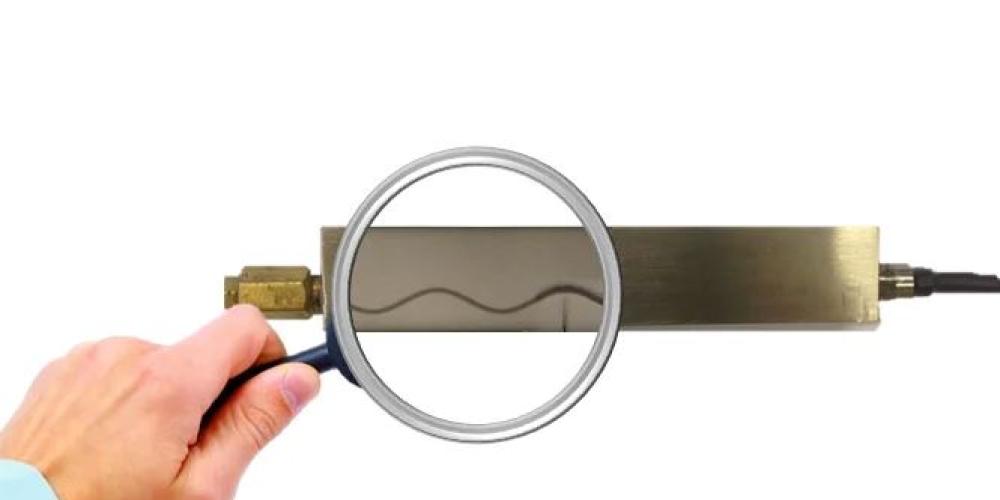
VUB researchers use 3D printing to integrate sensors in metal
Researchers from the Department of Applied Mechanics at the Vrije Universiteit Brussel have succeeded in building metal parts that automatically indicate when they are overloaded or are causing damage. To do this, they used metal 3D printing to integrate sensors into the metal itself. “The development of the integrated solution for damage detection and load measurement in 3D-printed metal parts is pioneering work. 3D printing makes it possible to work on the inside of a part and integrate functions into it. Until now, this has not been possible with traditional production techniques”, says Dr Michaël Hinderdael, a postdoctoral researcher in applied mechanics.
Many disasters involving rotating machines, transport such as trains and aircraft, or large infrastructure such as wind turbines and bridges are caused by metal fatigue. This is a break in the material as a result of a prolonged fluctuating load. The fracture starts as a microscopic crack and slowly grows to macroscopic dimensions. Many factors play a role in the development of metal fatigue, such as incorrect choice of material, rough finishing or a damaged metal surface, incorrect design with sharp transitions, underestimation of dynamic loads, and poor maintenance including failure to replace a part in a timely manner. Preventing metal fatigue is therefore also very difficult: choice of material, design, load, production and maintenance must be perfectly attuned.
By using smart components that detect damage or overload, the risk of metal fatigue and its consequences can be reduced. Researchers at the Vrije Universiteit Brussel have now succeeded in integrating such a detection system into 3D-printed metal parts. Dr Hinderdael: “During the production process, tubular recesses are built into the part at critical places, which are then filled with a gas or liquid under pressure. The pressure is observed by a pressure sensor during operation. The sensor reports differences in pressure, for example, if the pressure escapes because a crack has emerged.”
Because the sensor registers any difference in pressure, the load on the component can also be measured. If the metal component holds a load, it becomes deformed. The recess in the metal deforms with it, changing the pressure. The application allows continuous measurements to be taken, even in critical locations that are inaccessible or difficult to check during traditional maintenance operations. This significantly increases the level of safety. The technology will also reduce maintenance costs, as maintenance can be better matched to the actual health of the components.